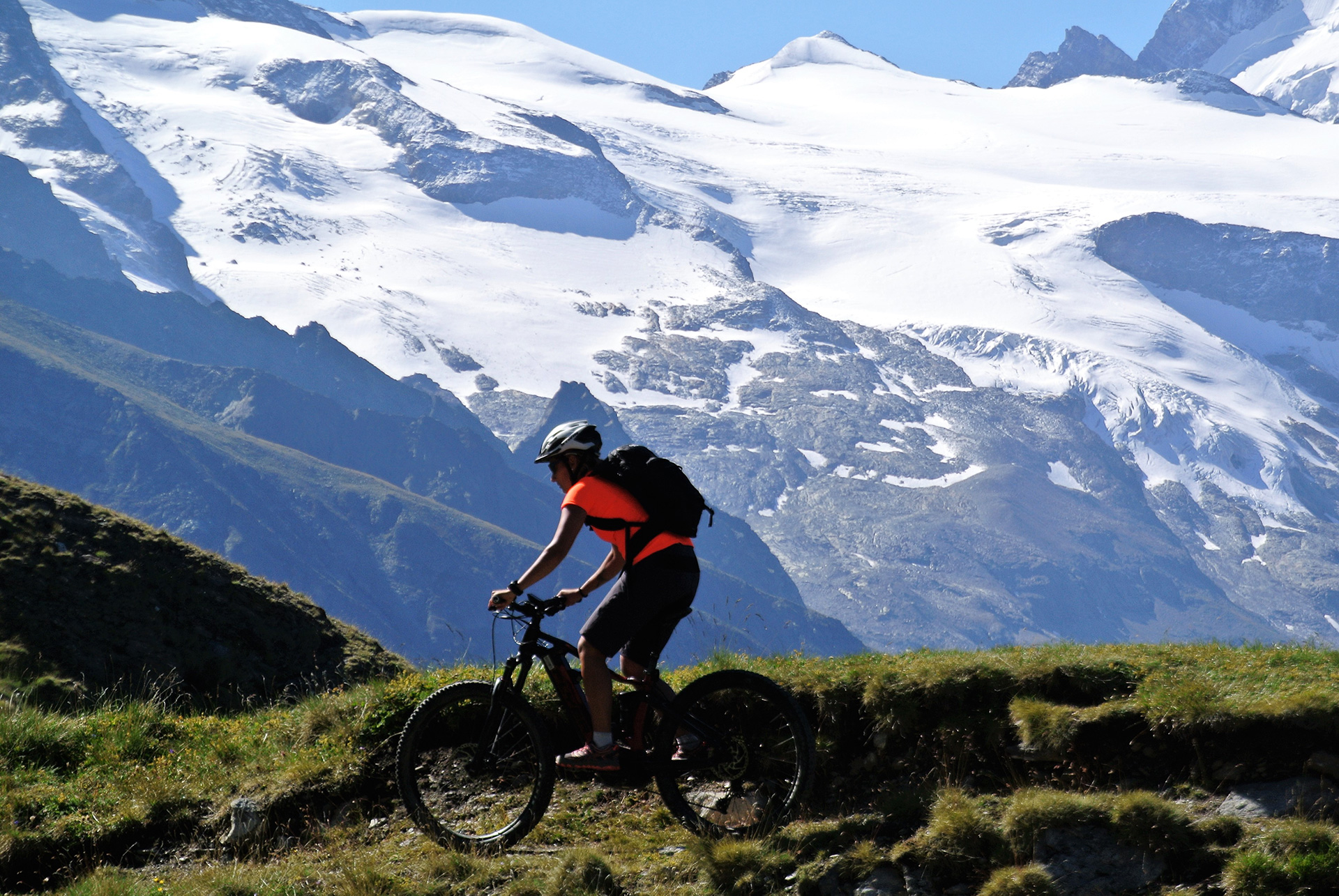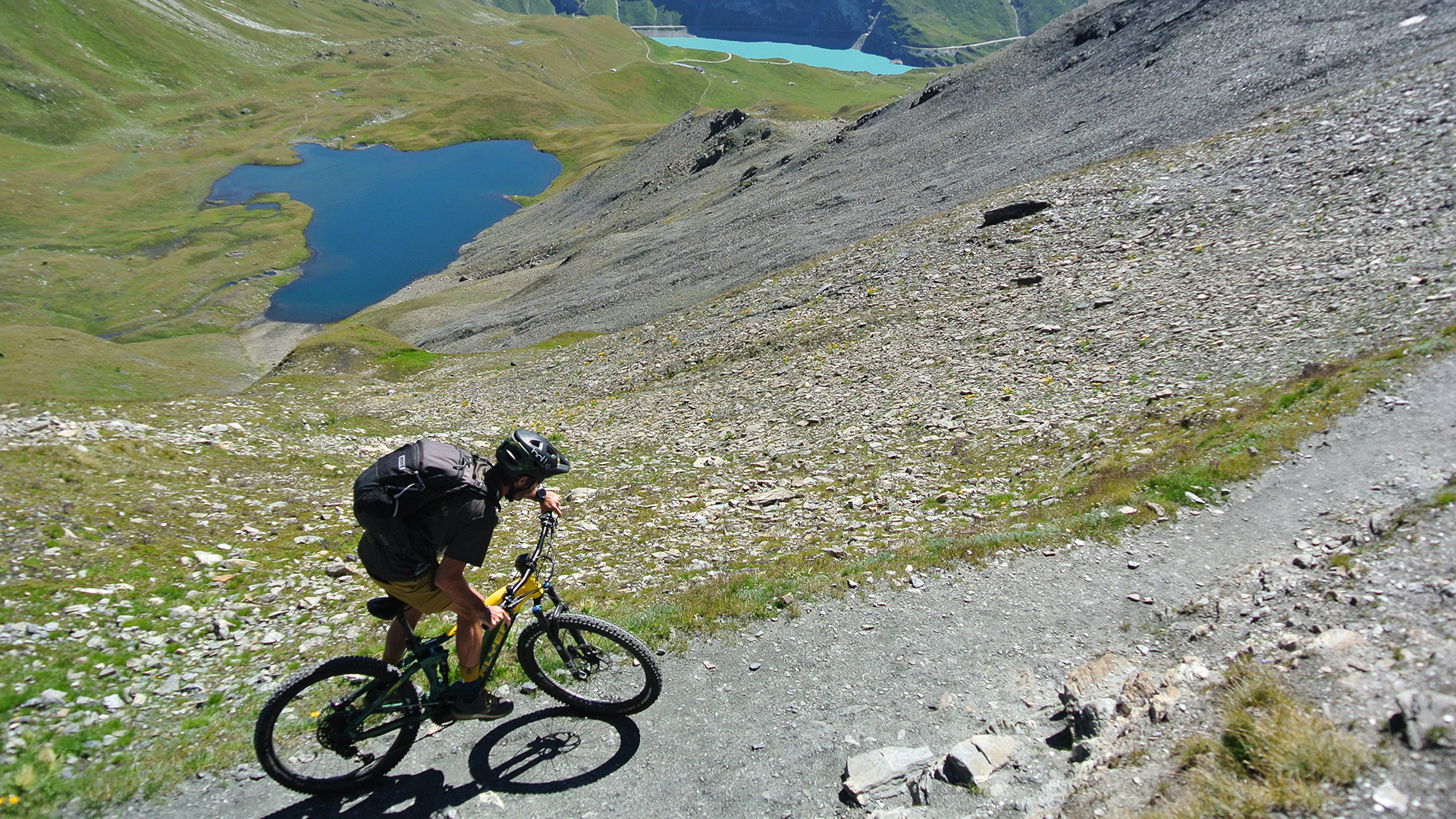What to look for when buying an electric mountain bike
Here are the key features you should be paying attention to when choosing your new e-mtb


E-mountain bikes are becoming almost as popular as regular mountain bikes, but if you're in the market for one there are a few things you need to consider before splashing out. Once you've clued up, head to our best electric mountain bike guide for our pick the best models on the market today, but for now, here's what to look for before turning those power-assisted pedals.
- Not heading up hills? Here are the best electric bikes in general
- Confident in your own pedal power? Try the best mountain bikes instead
- ... or one of the best mountain bikes under £500
1. The motor
The motor, along with the battery that powers it, is the essential difference between an electric mountain bike and a regular mountain bike. The vast majority of e-mtbs are 'mid-engined' – in other words the motor will be located in the vicinity of the bike's bottom bracket because this provides the best handling and a smooth ride.
There are a number of different brands with the main players being Shimano, Bosch, Fazua, Yamaha and Specialized, the latter manufacturing its own motors for its bikes. They all vary in terms of power output (measured in watts), torque (measured in Newton metres) and weight – unfortunately there isn't room to go into these in detail here, but it pays to do your research on these factors before buying.
In essence though, wattage is how much boost the motor provides, whilst torque is how much extra acceleration/pulling power you'll get away when pedalling away from, say, a standing start or up a steep slope.
Bear in mind that if your bike has a motor rated more than 250W or an assisted speed with the motor in excess of 15 mph/24kph you'll need a licence to ride it; that said, any e-bike you buy from a reputable bike shop will almost certainly be restricted to 15 mph max, although they can be re-tuned to exceed this, but this may void the warranty on the motor.
Regulated motors will cut out at 15 mph and you'll be relying on leg power to keep going above this speed, and there's usually some drag from the motor – this varies between brands.
But, of course, the trade off is that riding uphill and over rough terrain is so much easier on an e-mtb; it's only really on flat, cruisy terrain that you'll feel the extra weight and drag when the motor cuts out, and who rides that kind of stuff on an e-mtb anyway?
Get all the latest news, reviews, deals and buying guides on gorgeous tech, home and active products from the T3 experts
2. The battery
The neatest looking electric mountain bikes tend to have their batteries mounted internally within the frame, although quite a few still run external batteries. These have the slight advantage of being easier to attach/remove from the bike for charging, although both external and internal batteries will have a charging point on the bike so you have the option of charging them whilst still attached.
Batteries tend to be either 400 Wh (Watt hours), 500 Wh or 625Wh in size; a bike with a smaller motor combined with a bigger battery will give you more range, and whatever size of motor you have, the bigger the battery the longer the ride you can get on one charge.

The main impact on battery life will be the kind of terrain you're riding and the mode you ride in. The mode is controlled from a handlebar mounted display – Bosch, for instance, offers Eco, Tour, E-MTB and Turbo modes on its systems, which in ascending order require less input from the rider but at the same time uses more battery power. Lots of big climbs in Turbo mode will suck at the juice way quicker than an easy pootle on a flat bridleway in Eco mode, for instance.
The display will also provide additional essential information such as speed, distance travelled and – particularly important – battery range and remaining charge. You need to constantly keep an eye on these to ensure you don't run out of power before the end of your ride.
Trial and error will teach you how to optimise your riding style to different modes and terrain in order to make the most of your battery life.
3. The weight
One of the first things you'll notice when handling an electric mountain bike is the weight, which is considerably greater than a regular mountain bike. As an example, the Cube Stereo Hybrid 120 e-mtb comes in at around 24kg; the same model in 'regular' format weighs around 14.5kg.
However, you'll be amazed at how little you notice the extra weight once you're actually riding thanks to the assistance from the motor and the fact that e-mtb frames are designed to handle as smoothly as regular mtbs despite their extra weight. The only time it really becomes an issue is if you have to lift the bike over a stile, onto a vehicle bike rack or in/out of your car or van.
4. Added features
Depending on the kind of riding you plan to do you may or may not want to go for full suspension on your e-mountain bike; obviously a bike without rear suspension will be lighter, but given the twin facts that e-mtbs are pretty heavy in the first place and the motor offsets that weight penalty the additional weight of rear suspension is not that big an issue.
If you're looking to do a lot of steep and/or technical downhill riding a dropper post is well worth having; again, the extra weight isn't worth worrying about since you have the motor to handle that.
Also consider going for tubeless tyres. Besides punctures being easier and quicker to repair than with regular tyres you don't have to remove the wheel from the bike to do so. And you can afford to run with chunkier tyres since their rolling resistance is easily overcome by the motor.

5. The price
If you're buying new and are after a full-susser then you need to budget upwards of four grand to get a machine that will have the kind of quality components that are reliable and tough enough for serious off-road riding. That said, there are e-mountain bikes available for considerably less than this, but they're more suited to gentle bridleways, forest fire roads and the easier routes at trail centres.
Bargains can be found on E Bay and the like, but as with any second-hand mountain bike you can never be 100 per cent certain of how harsh a life the bike has had with its previous owner, so a good check over the frame, motor, battery (in particular how much use it has had) and components by someone who knows their way around a bike is essential before you commit to buying.
6. The e-bike smile
If you haven't heard about the e-bike smile, you'll experience it for yourself the first time you ride one; everyone who jumps aboard an e-bike seems to end up with an ear-to-ear grin as soon as they start riding since they're so much fun. Who says money can't buy you happiness?

Alf Alderson is an adventure travel writer and outdoor gear reviewer who splits his time between the Pembrokeshire coast and the French Alps, where he is an 'ambassador' for the ski resort of Les Arcs.